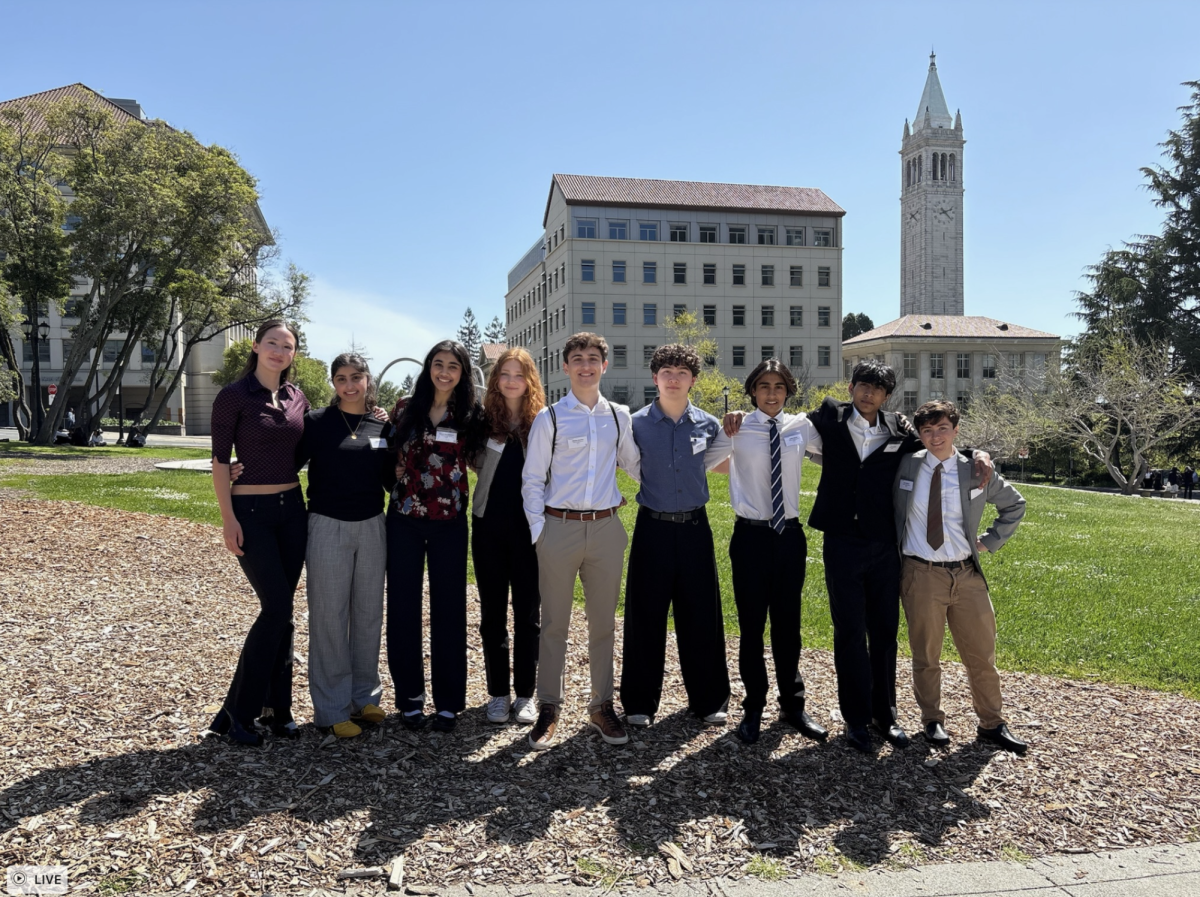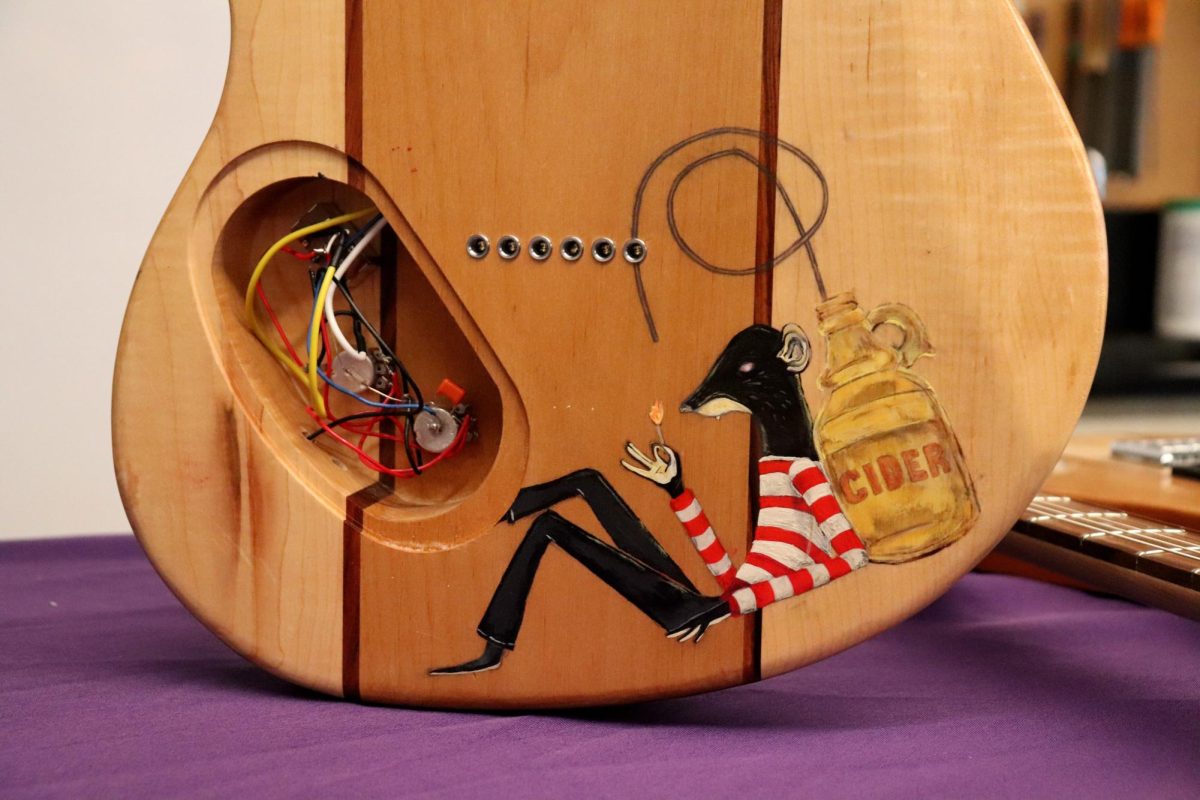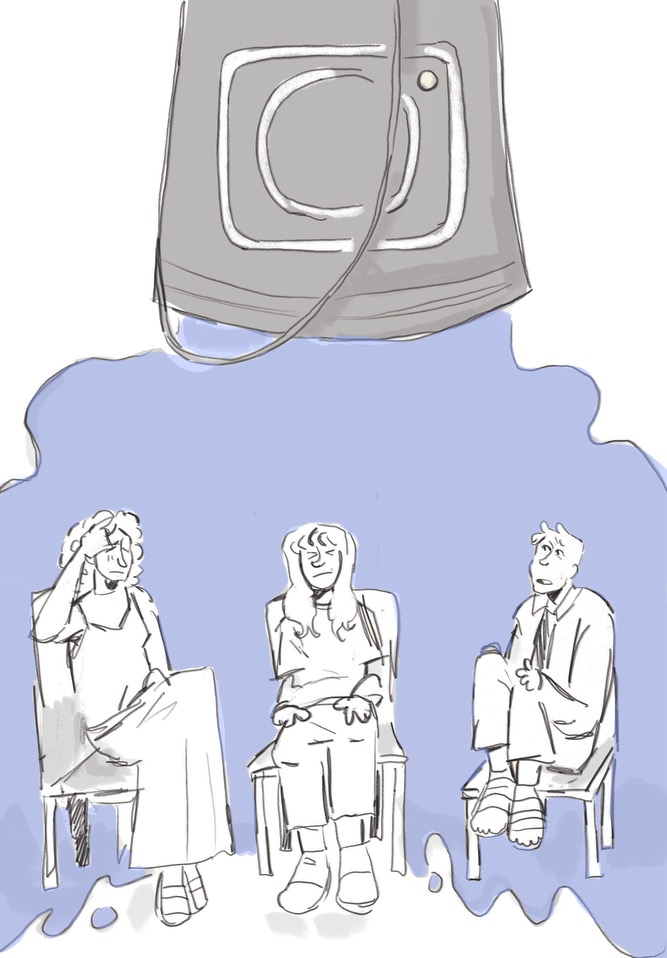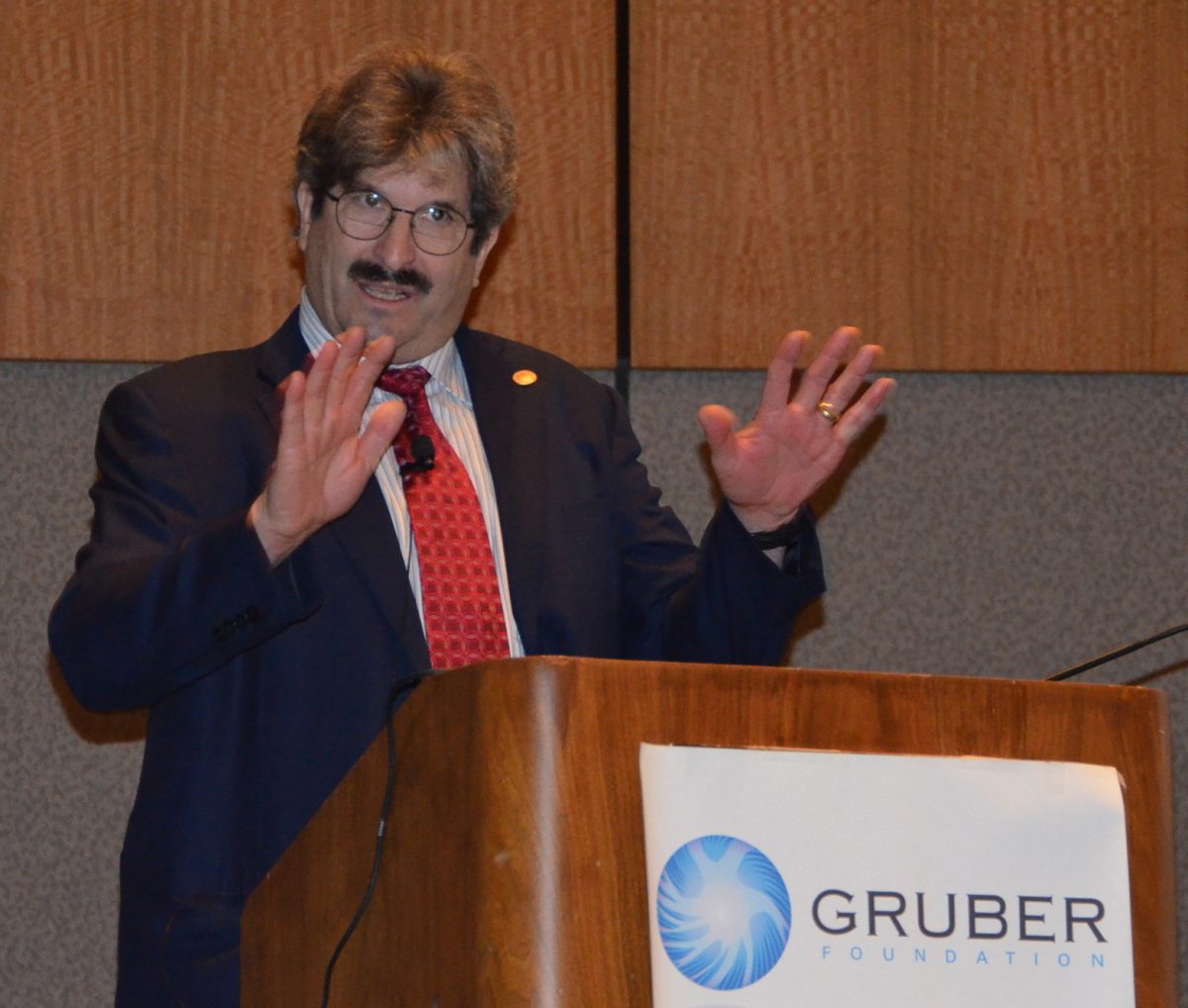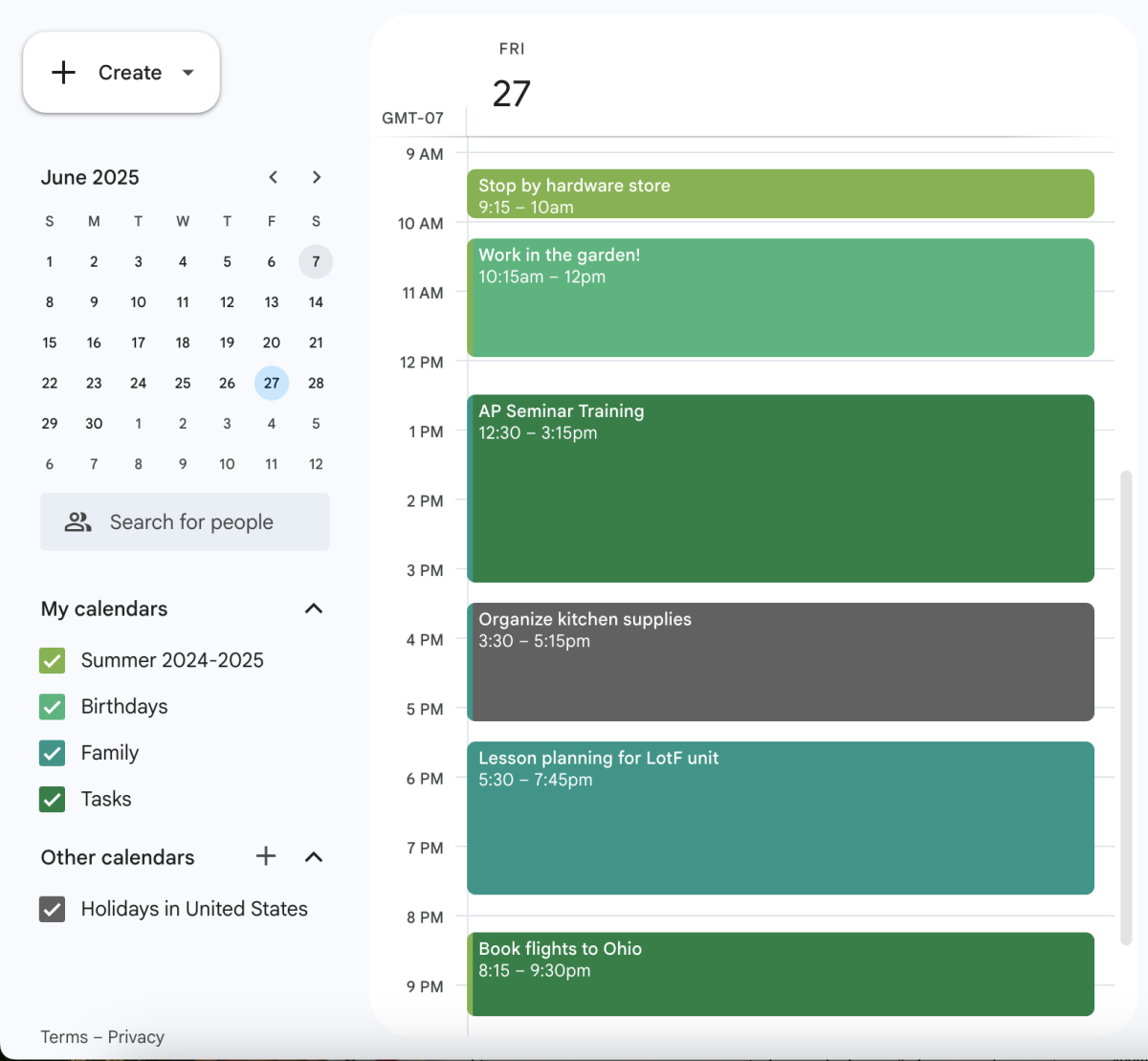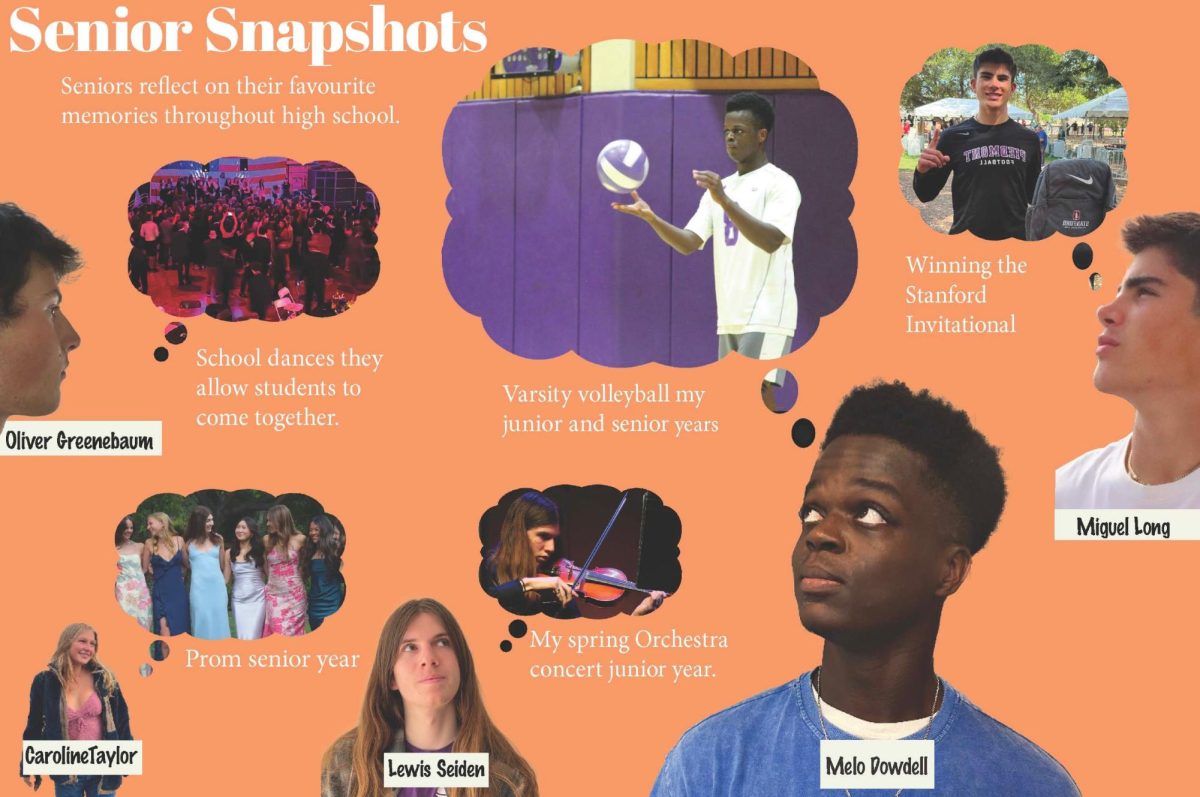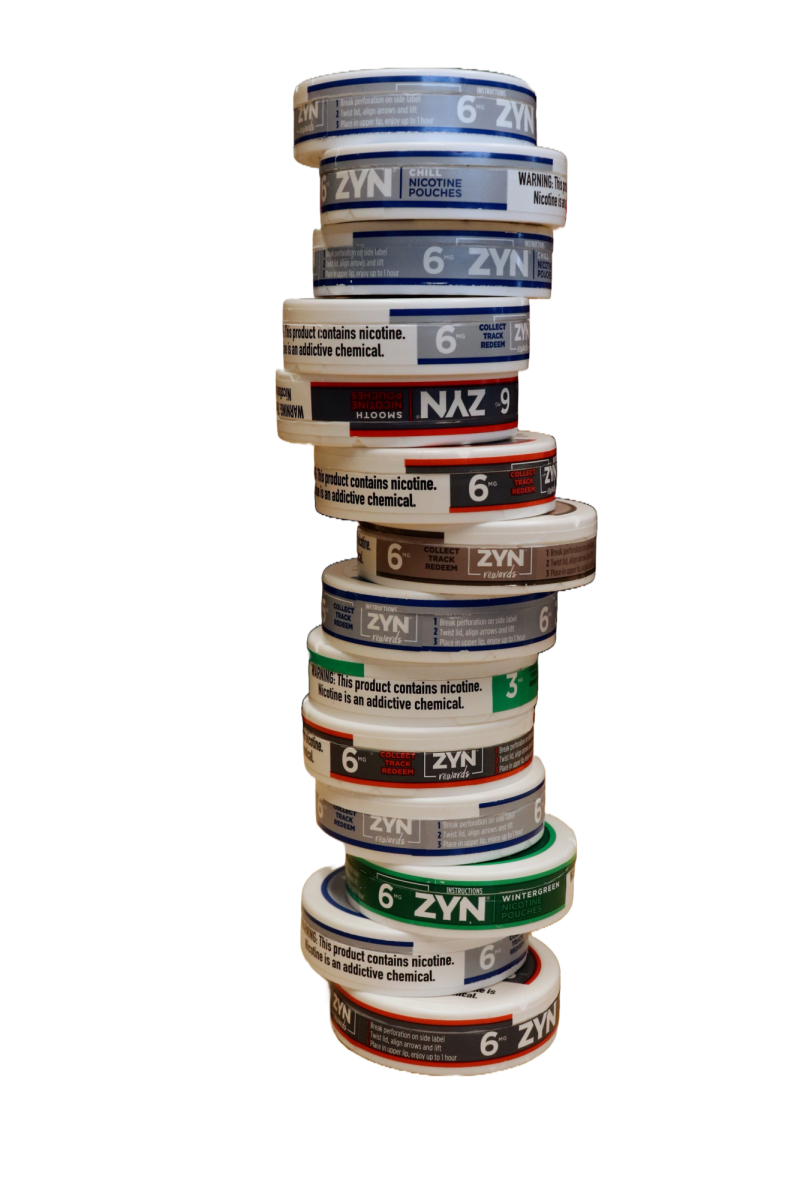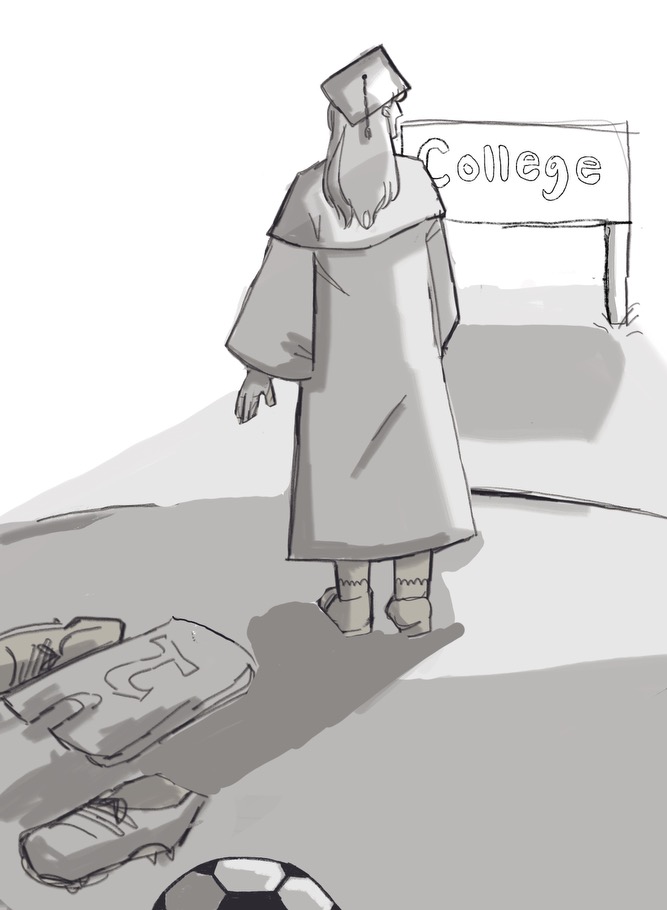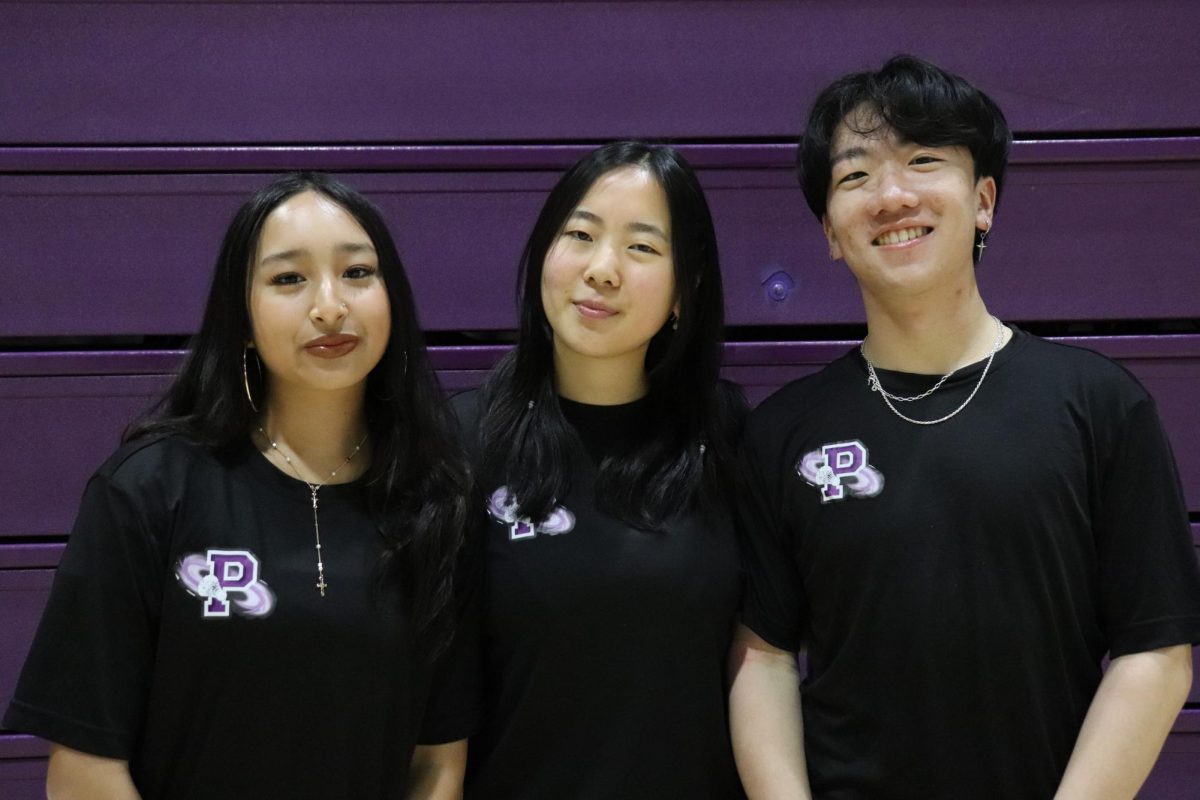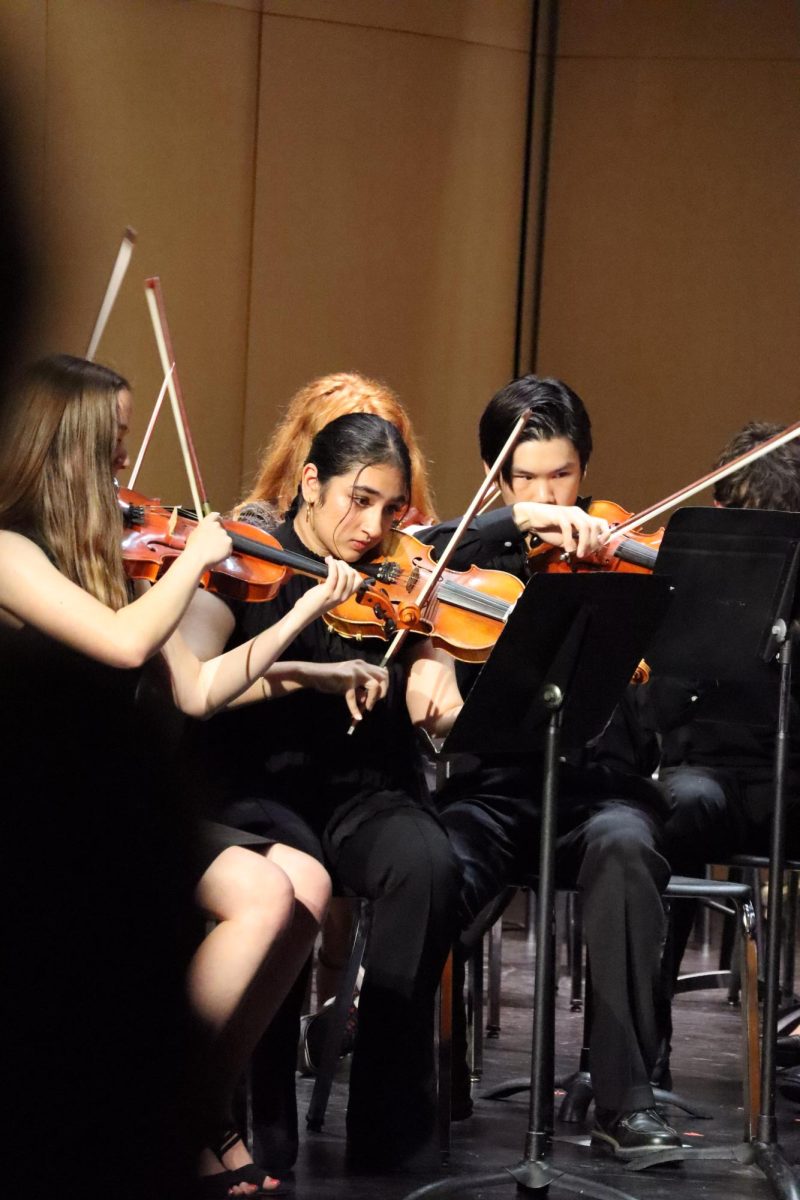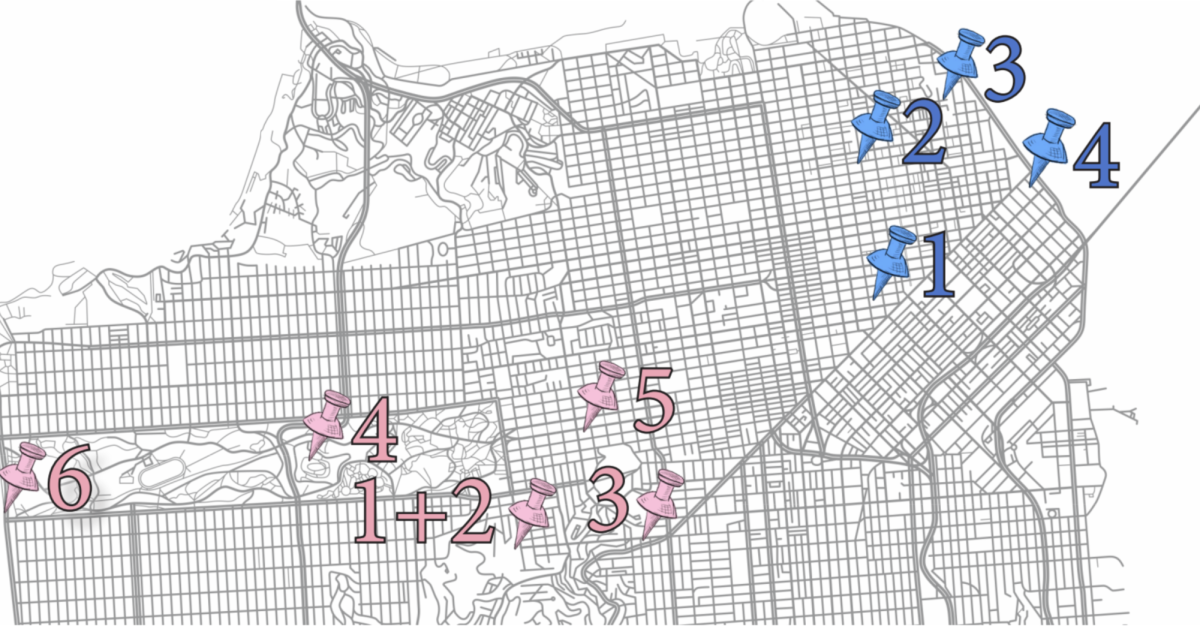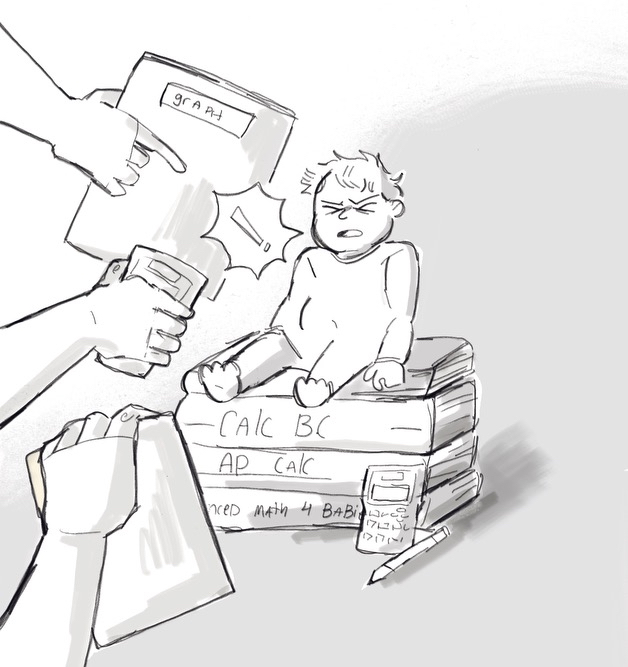Academics
In 1976, a student’s transcript may have included courses in marine biology, consumer math, Latin, driver’s education, woodshop, home economics, and secretary training.
Over the years, Piedmont has discontinued some academic courses and added others.
Science teacher Shelley Seto-Rosen said she was hired 20 years ago to teach a marine biology class. The class, which was formerly taught by bird-calling aficionado Leonard Waxdeck, was replaced by AP Biology in 1995.
When Seto-Rosen first arrived, the science curriculum resembled the current curriculum. However, a movement within the educational community sparked a switch to integrated science, in which all freshmen and sophomores took Integrated Science 1 and Integrated Science 2.
“The idea is that each science discipline does not exist on its own,” Seto-Rosen said. “True science is really integrated.”
Then, in 2007, Piedmont returned to the one-subject-per-year science model because integrated science lacked academic resources and was incompatible with standardized testing.
Math teacher Edmund Mahoney, who began teaching 35 years ago, said that the school used to offer a variety of non-college preparatory courses, such as consumer math, in which students learned how to balance checkbooks.
The social studies department offered a constitutional law class taught by former teacher and principal Rich Kitchens.
James F. Cook, Class of ‘85, said he enjoyed constitutional law because of Kitchens’s passion and high standards.
“It was great to be challenged and [Kitchens] expected a lot out of his students,” Cook said. “Mr. Kitchens was also the coach of our league topping basketball team and had to ‘teach’ us players that ‘de-fence’ is not just something that goes around ‘de-house.’”
Social studies teacher Alli Cota said that in her 18 years at PHS, two social studies courses have been added: AP European history and psychology.
Before 1987, seniors could choose between economics and psychology. However, in 1987 the state mandated economics, causing the psychology course to lose popularity until Cota revived it.
“I developed the [psychology] course proposal in 1997,” Cota said.
More recently, the school has added honors English, web design, sports medicine, jazz band, biotech, and Spanish 3 in Action counselor Chris Hartford said.
Some of these new subjects have inspired students to pursue careers in the field, Hartford said.
“Students who take sports med often want to go into athletic training,” Hartford said.
In the mid-1990s, the bell scheduled shifted from a traditional format with seven 50-minute periods every day to the current block schedule.
Seto-Rosen said the school implemented the block schedule to reduce stress, lengthen passing periods, and designate time for staff development and tutorial.
“The block periods made me more cognizant of doing a variety of activities in a single class meeting,” Cota said.
The change to the four-period-per-day format encouraged students to become more actively involved in classes, Mahoney said.
“I don’t lecture much anymore,” Mahoney said.
In the mid-1980s, Piedmont was on the cover of a Newsweek magazine that profiled the top schools in the country.
Both Seto-Rosen and Mahoney said Piedmont’s academic reputation has remained constant.
“It’s always been seen as a top school,” Mahoney said.
On the other hand, computers teacher Nathan Mattix feels like Piedmont’s academic reputation has slightly declined.
“I remember when I first started working here [14 years ago], everyone seemed so impressed [with] Piedmont High School,” Mattix said.
Cook said that when he was a student, PHS had a reputation for strong academics and elitist attitudes.
“Sometimes we would get taunted when we played our rival Alameda County Athletic League teams in sports for this reason,” Cook said. “I think PHS is a more diverse and vibrant place now which is a big improvement.”
Part of Piedmont’s high reputation is the dedication of the students.
“Students were very motivated to take rigorous classes ten years ago and they still are,” Hartford said.
Hartford has seen a slight increase in stress about college admissions, which he thinks could be due to the 2008 recession.
Similarly, Mahoney said that students feel more pressure about getting into college, which he notices because there are now three calculus classes instead of just one.
“More students feel obligated to take a challenging load,” Mahoney said.
Hartford said the biggest change he has seen in his ten years at PHS is the use of electronics. Ten years ago, he helped students make copies of their college applications and stuff them into envelopes. Now the Common Application streamlines the application process, he said.
“So many things are electronic now, which seems like a positive,” Hartford said.
However, some aspects of PHS haven’t changed.
“I love that I still hear the bagpipes when I visit my mother in Piedmont,” Cook said.
Social Life
In 1976, the PHS football stands would have been crowded to the brim with enthusiastic “clubs” cheering on the Highlanders on a Friday night.
However, students today experience a more blended social atmosphere, compared to the fraternities and sororities, also known as clubs, that shape PHS’s social past.
“In those days,” Rick Kurkjian, Class of ‘73 said, “the high school was tenth, eleventh and twelfth grade. Piedmont Junior High was seventh to ninth grades.”
Kurkjian said there were four boys clubs: Kimmers, Rigma Lions, Kappas, and Bishops.
“In 10th and 11th grade I was in the Kimmers. They threw several parties a year including a South Seas Party and a Senior Farewell formal dance,” Kurkjian said. “Parties were for members and their dates, no one else was included.”
Kurkjian said he quit Kimmers because they were exclusive, like many of the clubs at PHS at the time.
“There were three girls clubs: Baby Hospital, Junior Assistance, and Junior Organization,” Karen Ellis, Class of ‘84 said.
Ellis said the club parties all had different themes and were in the Hills or at students’ houses. She said each club chose four sophomores to join, and in the fall many juniors and a few seniors were chosen by giving bids which were dropped off on doorsteps early in the morning.
“Looking back now, especially since I have kids, I feel horrible these clubs went on and how hurt the kids must have felt who never got bids,” Ellis said.
Kathy Kelleher, Class of ‘79, was a member of the Junior Assistance League, and said that the social scene was a bit cliquey.
“In hindsight, they were exclusive and left a lot of great people out,” Kelleher said. “The girls clubs were loosely associated with charities.”
Kurkjian said his group of friends would play poker every Friday night and go to the Santa Cruz beaches on the weekends, as many high school students today enjoy as well.
“Football and basketball games were attended by the student bodies of all the Piedmont schools,” Kurkjian said.
Student body elections were a big deal, said Kurkjian.
“We had two administrations per year,” he said. “We were called the Board of Control.”
Ellis said that she remembers going to Telegraph Avenue as a high schooler, just as many students at Piedmont do today.
“We loved going to Stinson and Aptos beaches and staying the whole day,” Ellis said.
She also said that many of her friends babysat during the week, a task that students at Piedmont today take on as a way to make extra money.
“We went to our usual places to eat: Lakeside Deli, Blondies, Jack in the Box, and Fondue Freds,” Ellis said.
Ellis said she is glad to see that kids are friends within the four grades a lot more now, when back then freshman and seniors did not have a lot of interaction.
“I am proud to see the changes at PHS now,” Ellis said.
Athletics
Water polo. Cheerleading. Badminton. Lacrosse. All sports that are staples of PHS’s athletic scene. All sports that did not exist on the PHS campus 30 years ago.
Carlton Chan, Class of ‘87, said that he was an average athlete compared to his peers, playing sports recreationally instead of competitively.
“I felt, then, that certain sports were the realm of popular students and the PE teachers would often put them on a pedestal, which I did not care for,” Chan said.
Chan said that many athletes, particularly football players, dominated the social scene of PHS.
“Football was popular, those who played it were generally more popular and were very likely at more parties,” Chan said.
Chan said that this athletic popularity was not as prevalent with female athletes, however.
“There was a relationship between sports, boys, and popularity which did not carry over to the girls’ side,” Chan said. “I could not say that the best female athlete carried the same cache as the best male athlete in terms of social scene.”
Chan said that when he went to PHS, students also embraced the tradition of varsity letterman’s jackets, more so than they do today.
“Students would wear their sport with pride — the letterman’s jacket was quite popular,” Chan said. “Athletes would give their letterman’s jacket to their girlfriends.”
Along with decline in letterman’s jackets, Chan has also noticed a change in athletic hazing. He said that hazing in the 80’s was enhanced by the presence of social clubs, male clubs often being dominated by male athletes. Today, these social clubs no longer exist on the PHS campus.
“Every year, you could drive down Highland Avenue in the morning and see a girl tied up to the traffic light pole at Oakland and Highland dressed in a toga,” Chan said.
Athletic director Jeff Peters, Class of ‘96, agrees that the prevalence of athletic hazing has also declined.
“It has changed a lot, for the better,” Peters said. “Hazing of any kind should not be allowed in any high school.”
Both Chan and Peters said that a large shift in PHS athletics has been in the increase of athletic opportunities for students. When Peters went to PHS, the school lacked many of the teams it has today, but had its own men’s volleyball team. Sports such as lacrosse, badminton, water polo, and cheerleading were not offered to students when Chan attended PHS.
“There are a lot more choices today,” Chan said. “There are even more choices if you chose to do a sport outside of [PHS].”
Chan said that the biggest change that he has noticed in the athletic scene has been the increase in year-round sports. Chan said that along with the change in athlete dedication, he also notices an increase in athlete burnout and injury.
“My hope is [that students] continue to play for the sake of playing and go out and play in an unorganized fashion,” Chan said. “I see a lot of [students] playing ultimate frisbee — just for fun. There is hope.”
Bird Calling Contest
“Wax,” a student asked one lazy afternoon in 1963, “can we do something to liven things up around here?”
And that’s where it all started.
Founder of what is now known as the Annual Bird Calling Contest, biology teacher Leonard J. Waxdeck took this request in mind and began this treasured tradition in his classroom.
“I don’t know how long it took to build it up to where it was,” math teacher Edmund Mahoney, who began teaching at PHS 35 years ago, said, “but it did start as a small little thing in the classroom, and then it turned big.”
Mahoney said that when he first starting teaching, Waxdeck had already been here for about 20 years.
“Waxdeck was a character and one of the mainstays of the faculty,” Mahoney said. “He was kind of flamboyant, strong-willed, had a big ego, and was fun.”
Mahoney said that in his first years at PHS, the contest was a big deal.
“[There were] articles in the paper, it’d be on the news, they’d have celebrity judges and all,” Mahoney said. “And [Waxdeck] was a big part of that because he got it organized and got these celebrity judges and really built it up to be a big event.”
Physics teacher Glen Melnik began subbing at PHS for Waxdeck and other teachers in 1977. Melnik said when he first became associated with Piedmont, the contest was already in full swing.
“It used to be a very formal event,” Melnik said. “They would wear tuxedos for the guys and formal attire for the girls. Back then they used to have bird calling coaches that would actually come in and coach ahead of time for weeks.”
In 1993, a year after she began teaching at PMS, contest stage manager Linda Jarvis said that Larry Zedaker, a science teacher and close friend of Waxdeck’s, gave her a ticket to the show.
“It was a sellout and I couldn’t even buy a ticket, so luckily I was given one,” Jarvis said. “I sat in the front row of the theater and I was memorized, I was hooked. I thought, ‘This is awesome. I love this.’”
Prior to his passing away in 1994, Waxdeck would emcee the contest.
“He was kind of a legend. He was a real showman,” Jarvis said. “He had such a presence, and it was his show, and that’s why it worked.”
Melnik said Waxdeck would give incredible presentations to kick off the contest, in which he would read off invitations and responses he supposedly sent and received from famous people.
“He would say, ‘Yes I gave an invitation to the Queen of England and she answered back,” Melnik said. “He would read these denial things, whether they were true or not, nobody knew, but they were hilarious.”
Mahoney said that back then, there would be more acts compared to the number there are now. After the contest, there would be a champagne and strawberry party at someone’s mansion in Piedmont.
“It was a more elaborate, bigger affair,” Mahoney said. “Not to take anything away from it now – I’m glad they brought it back and continued it on, but it definitely had more flare in its early days, and a lot of it was due to Waxdeck and his personality.”

